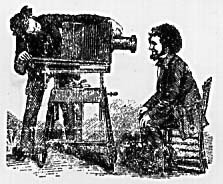1) Joe Sacco's Palestine is a graphic novel depicting his travels through Israel---the West Bank and Gaza Strip, and his chats with displaced Palestinians along the way. This graphic novel didn't really have one story to follow...sure the overflowing story was his trip and his travels, but the main bulk of the novel was broken down into other people telling the stories. As in City of Glass, authorship is played with, but knowingly so. Sacco goes the whole book "narrating" the stories of the Israel occupation of the Palestinians in the Gaza Strip, focusing on individual Palestinians' accounts of terror or militant run ins.
2) Main theme, Issues, or Ideas: I think that one of the main themes or ideas to recognize is, of course, the play with authorship. Sacco is using other people's stories, in effect, to create his own. The role of the city is apparent in the fact that these people (the Palestinians in the Gaza Strip, or anywhere for that matter) are confined to the "city" or lack thereof because of these miltary occupations not letting them out for education or hospitals or anything. In this case, the Palestinians are establishing their cultures within the confines of the city, the kids are growing up and have no opportunities to expand their minds.
Another theme, to me, is the conveyance of expressions and emotions through the visuals. Which i will go into in the next section.
To my group: Please expand more on the themes issues and ideas and help me out. :)
3) Description of Visual Style: The visual style in this graphic novel is not highly interpretive as in Paul Auster's. Mainly, the pictures convey what exactly the speech bubble is talking about. No hidden meanings as far as I could see. However, if you look closely, you notice the expressions on everyone's faces as clearly establishing some message. As for our "narrator", Joe, you may have noticed that his eyes (and his main expressions) are hidden behind his glasses, his real eyes are never shown.
I also noted that during extremely chaotic moments, as in a fight breaking out, the panels become scattered and confused, mirroring the emotions, or they just disappear entirely and its a mass of pictures to interpret.
If someone is telling an important story, or it is extremely graphic or painful, there are more panels to a page. Say, 12 instead of 5. It progresses us panel by panel so that it soaks in to us more immediately as a reader and we can be more involved.
To me this graphic novel is all about emotions. A picture is worth a thousand words, and things such as the ones that Sacco speaks of are more impactive with the aid of a picture.
announcements
This blog was created by and for students in an Introduction to Cultural Studies class at the University of Washington. Through an investigation of urban experience and representation--in theory, in graphic novels and in our own "readings" of Seattle's University District--we considered the formation and history of cultural studies as an (anti)discipline, with a special emphasis on the questions, "What does cultural studies do, and how do you do cultural studies?"
If you'd like to know more about the class, the blog or our U-District artifact project, please contact Gabrielle Dean: gnodean@u.washington.edu.
If you'd like to know more about the class, the blog or our U-District artifact project, please contact Gabrielle Dean: gnodean@u.washington.edu.
Subscribe to:
Post Comments (Atom)
blog archive
-
▼
2008
(92)
-
▼
May
(26)
- Seattle U District: City Artifacts Map
- City Artifacts: What and Where?
- Researching History and its Representations...
- Palestine
- Persepolis 1 & 2
- Shutterbug Follies
- A Scanner Darkly
- Maus I & II
- A Scanner Darkly
- Maus I & II
- Shutterbug Follies
- Persepolis 1 and 2
- Postcards: True Stories that Never Happened
- Maus I & II
- Postcards: True Stories that Never Happened
- Persepolis 1 & 2
- Mail Order Bride
- Mail Order Bride: Mark Kalesniko
- Persepolis 1 & 2
- Shutterbug Follies
- Maus I and II
- Palestine
- Postcards: True Stories That Never Happened
- PALESTINE
- Postcards: True Stores That Never Happened
- Shutterbug Follies
-
▼
May
(26)

No comments:
Post a Comment